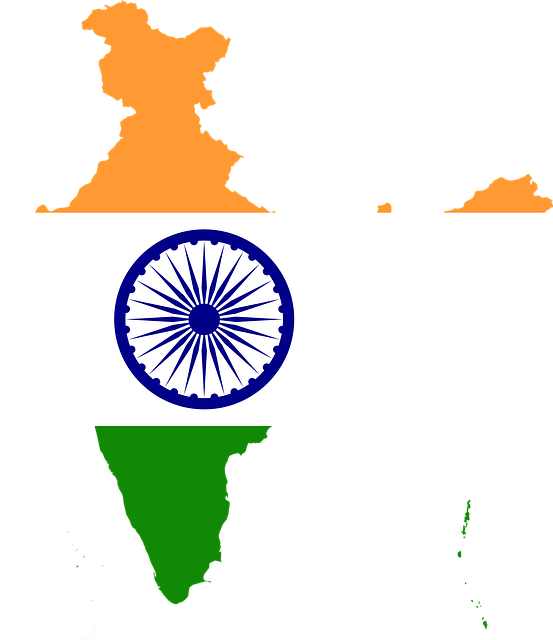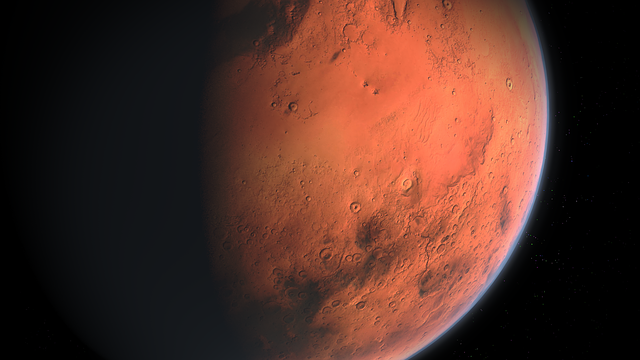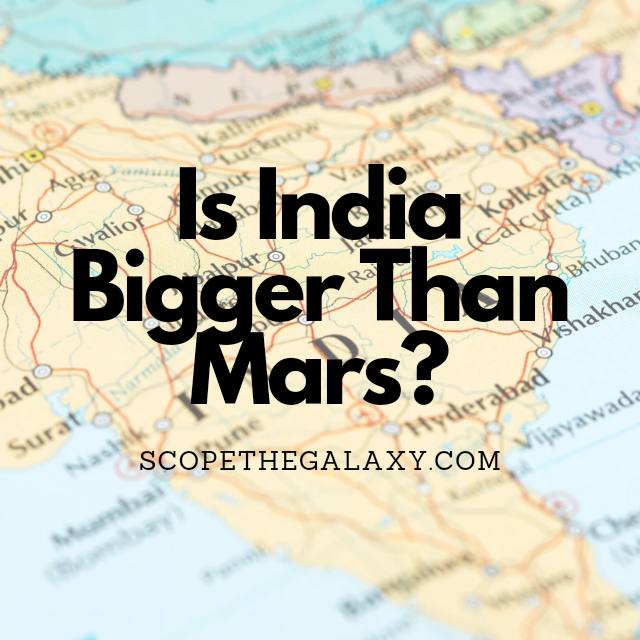*This post may contain affiliate links. This means we may make a commission if you purchase an item using one of our links*
India is the seventh largest country on Earth, while Mars is the second smallest planet in our solar system. As a result it only makes sense that it’d be bigger with a surface area of 144.8 million sq. km compared to India’s 3.28 million sq. km whereas China’s volume is far smaller at 154.5 million cubic km compared to Mars’ astronomically larger 163 billion cubic km.
For a more thorough breakdown of what makes India and Mars as big as they are so, continue reading for a more detailed look at what makes each body as big as they are.
How Big Is India?

India is a South Asian country, which is the seventh largest by area and second most populated in the world (with over 1.3 billion people). In addition, it is the most populous democracy in the world. The Indian Ocean bounds it to the south, while the Arabian Sea covers the southwest, and the Bay of Bengal borders the southeast.
The diameter of India, measuring east to west, is 2,933km, while the extreme latitudes of north and south cover a length of 3,214km. Either way, it is smaller than the Mars’ diameter. India’s coastline stretches over 7,000km, meaning that much of India’s landmass protrudes into the Indian ocean.
India’s total surface area is 3,287,590 sq. km and covers a diverse range of landscapes, from dry stretches of desert to snow-covered mountain peaks. Most of the central, northern, and eastern regions of India encompass the fertile lands of the Indo-Gangetic plain, while the sandy and rocky landscape of the Thar Desert occupy the west.
This fertile area – sometimes referred to as the Ganges plain – covers a large amount of India’s north and is created by soil deposits from the rivers that run from the vast Himalayan mountains. In some areas, the depth of this silt can be greater than 25,000ft!
The highest point is India is undefined because of a territorial dispute with Pakistan. The highest point within this territory (known as Kashmir) is K2, which stands at 8,611m. However, the highest point in India’s undisputed territory is Kanchenjunga which reaches a height of 8,598m.
Average crustal thickness varies between regions, ranging from 30-35 km in the plains to 80 km in the mountainous areas. Calculating the mean thickness among all these variations totals roughly 47km. If we then multiply this by the surface area, we can calculate the estimated volume of India to be 154,516,730 cubic km.
How Big Is Mars?

Mars is the fourth planet in line from the Sun and the second smallest planet in our solar system. It has a diameter of 6,779 km, which is only just over half as large as Earth’s (around 53%)
The physical geography of Mars is very different from that of Earth. The atmosphere on Mars is much thinner than ours, and it consists mainly of carbon dioxide (CO2) with small amounts of nitrogen (N2). The surface gravity on Mars is much lower than that on Earth, so an object that weighs 100 pounds on Earth, would weigh just 38 pounds on the red planet.
The surface of Mars is mainly composed of various minerals like iron oxide and silicon dioxide. It also has polar ice caps, but it doesn’t have any oceans or seas.
Olympus Mons is the largest volcano on Mars, with a diameter of 600km. And it is the largest mountain in our solar system, standing at roughly 27km high (almost three times the height of Mount Everest)
The Valles Marineris system of valleys is a vast network of canyons on Mars; the largest canyon in the solar system. It is located in the planet’s southern hemisphere and extends for around 4000 kilometers from east to west; the deepest points can extend up to 10km.
The basic makeup of Earth and Mars is similar as they are both terrestrial planets with a dense metallic core and overlying crust and mantle. However, Earth’s density (5.514g per cubic cm) is higher than Mars’ density (3.93g per cubic cm), suggesting that the red planet’s core contains lighter elements than Earth’s.
The surface area of Mars is around 144.8 million sq. km, about 44 times the surface area of the India . Meanwhile, the volume of Mars is approximately 163 billion cubic kilometers, over 1,000 times that of India.
Summary
India is incomparable to Mars when it comes to overall size, whether it be in regards to diameter, surface area or volume.
After all it absolutely dwarfs it in these metrics due to its spherical nature, where it is over 40 times India’s surface area and over 1,000 times India’s volume.

